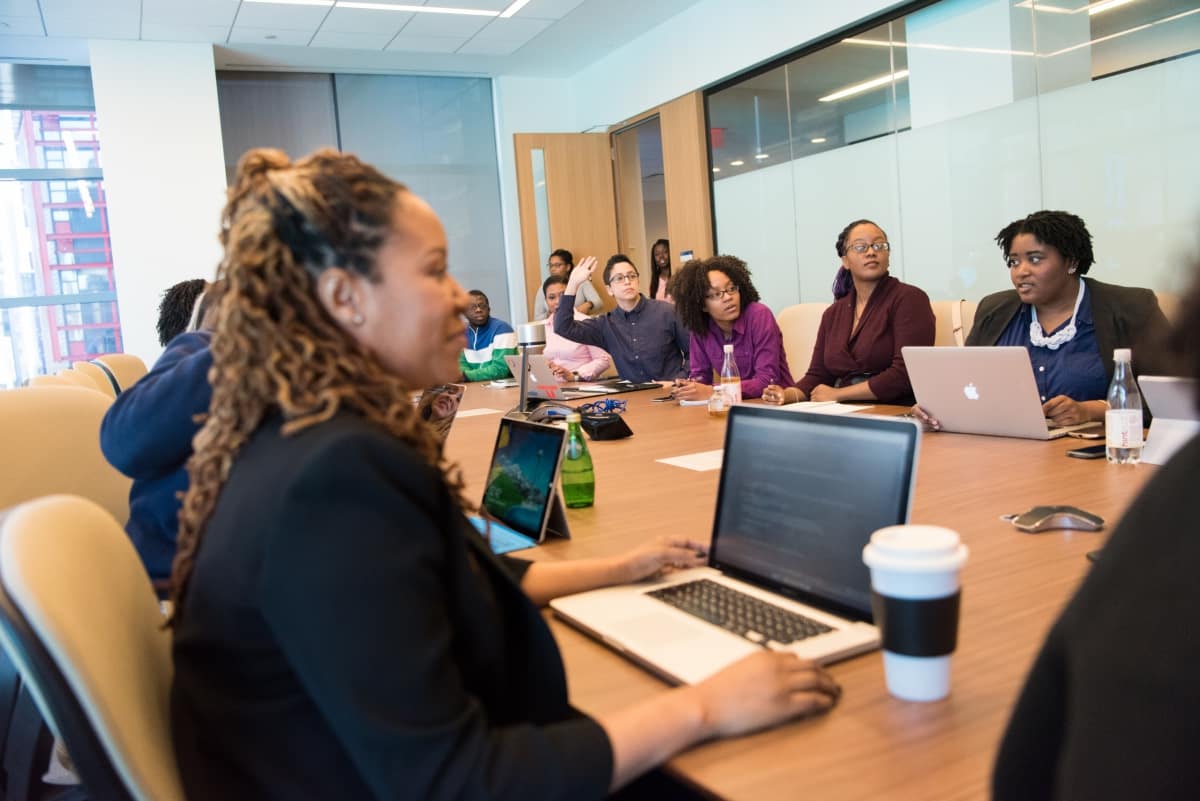Diversity, Equity and Inclusion
News • August 25, 2020

Let’s be honest, diversity is not a new topic and most organizations already have it as a stated business priority. And, unfortunately, over the last 25 years, I have worked with senior executives in companies large and small on diversity strategy, and not a lot has changed. Many leaders I have worked with have been disappointed or frustrated with the lack of results and outcomes that they have been able to realize. Through these experiences I have identified a few insights to consider when leaders develop a diversity strategy.
1. Challenge Assumptions and Perceptions
First, challenge the assumptions and perceptions that exist in the organization about Diversity. Here’s a quick story to illustrate my point. When I have my first discussion with senior executives about diversity, I often hear this same response, “Mary, we have tried to recruit and hire diverse leaders, but there just aren’t any diverse talent in X industry… they just don’t exist.” – fill in the blank with your industry.
Every time I heard this, I was a little confused and thought to myself, could this be true? My first response was to look at the recruiting and hiring data. When I did that, I found that organizations were successfully and consistently recruiting and hiring diverse leaders into the business. The problem was that they weren’t retaining diverse leaders. The turnover data showed that the same number of diverse leaders that were being hired annually, or more, were leaving the company. So, it was no surprise to me that the senior executives were not seeing any change in the diversity results for their business.
The lesson learned is, it is important to understand what the problem is before trying to solve it and take action improve diversity. In this situation, recruiting was not the problem, but rather, retention was the problem. One of the biggest myths and assumptions is the idea that diverse leaders do not exist in a specific industry or business and a successful diversity strategy includes both recruiting and retention strategies.
2. Build Diversity at the Front-line Manager Level
When I work with organizations on diversity strategy, the focus tends to be on the senior leadership. This is natural and understandable and ultimately, that is the goal for many organizations. However, the diversity of leaders deeper in the organization can be even more important. Let me explain why I believe this to be the case. Many organizations are quite diverse when you look at the total employee population of an organization. However, there is a clear pattern evidenced in organizations where we find a steep drop-off in the diversity of talent at the front-line manager level.
The entry-level leadership positions lack diversity and every subsequent level above that, the percentage of diverse talent continues to decrease. Therefore, even if hiring and promotion rates improve at senior levels, as a whole, the organization will not be able to “catch up” and close the gap because there are just too few diverse leaders in the organization’s leadership pipeline. A sustainable diversity strategy should put priority and emphasis on hiring, developing and promoting diverse leaders into the entry-level, front-line manager positions to make a positive impact on diversity results and outcomes.
3. Focus On Achievable Small Steps For Greater Impact
Finally, the subject of improving diversity can be overwhelming for many leaders. There is so much that needs to be done, the gap is large, and to be effective an organization needs a comprehensive, long-term strategy. All of this is very true and necessary. However, when people become overwhelmed or the problem feels too big to solve, leaders can become paralyzed and oftentimes, that leads to doing nothing; this is a natural human instinct. While I am the first to advocate for a diversity strategy that is long-term focused and comprehensive, I would also suggest that the greatest impact that leaders can have on any organization’s diversity results is 100% within their control, does not cost any money, and can be implemented immediately!
One of the most impactful actions that can be taken to support a diversity strategy is to create positive defining moments for employees. A defining moment is a small action that has a huge impact on the employee; it is not a grand gesture. Defining moments can be as simple as a “thank you”, recognition of an employee’s birthday, or simply making time to listen to an employee’s personal story. Especially in today’s environment, leaders need to be even more intentional about identifying opportunities to create defining moments. If the leaders in your organization were to make a list of the diverse talent on their immediate team or within their immediate department and began implementing one small action for one employee, every day, this would have a huge positive impact on the organization’s culture.
So, my call to action to each of you is this, starting today – make a list of the diverse talent on your team, identify one action that you will take in the next day or by the end of the week and begin creating positive defining moments. And, just like that, you have taken the first steps in bringing your organization’s diversity strategy to life! Here’s another tip, don’t stop there, leaders can create positive defining moments for each and every employee on their team!
Remember, leadership takes courage and courage is the fuel that drives change. I invite you to join me in leading change and building a diverse leadership talent pipeline for your organization, one leader at a time!

We see ourselves as uniquely positioned to help organizations build incredible places to work through an intentional focus on culture and diversity. Companies who are committed to building inclusive organizations are poised to realize extraordinary results, not only in terms of employee engagement and productivity but also in customer delight and shareholder return.
The path to creating the most inclusive organization begins with aligning an organization’s beliefs and mindset that Diversity, Equity and Inclusion is a critical driver to their organization’s success. Through customized solutions, tangible insights and relevant tools, The ITC DEI Practice and Solutions team can help you establish a foundation that will enable long-term sustainable culture change and position you as an employer-of-choice for diverse talent.

Let’s be honest, diversity is not a new topic and most organizations already have it as a stated business priority. And, unfortunately, over the last 25 years, I have worked with senior executives in companies large and small on diversity strategy, and not a lot has changed. Many leaders I have worked with have been disappointed or frustrated with the lack of results and outcomes that they have been able to realize. Through these experiences I have identified a few insights to consider when leaders develop a diversity strategy.
1. Challenge Assumptions and Perceptions
First, challenge the assumptions and perceptions that exist in the organization about Diversity. Here’s a quick story to illustrate my point. When I have my first discussion with senior executives about diversity, I often hear this same response, “Mary, we have tried to recruit and hire diverse leaders, but there just aren’t any diverse talent in X industry… they just don’t exist.” – fill in the blank with your industry.
Every time I heard this, I was a little confused and thought to myself, could this be true? My first response was to look at the recruiting and hiring data. When I did that, I found that organizations were successfully and consistently recruiting and hiring diverse leaders into the business. The problem was that they weren’t retaining diverse leaders. The turnover data showed that the same number of diverse leaders that were being hired annually, or more, were leaving the company. So, it was no surprise to me that the senior executives were not seeing any change in the diversity results for their business.
The lesson learned is, it is important to understand what the problem is before trying to solve it and take action improve diversity. In this situation, recruiting was not the problem, but rather, retention was the problem. One of the biggest myths and assumptions is the idea that diverse leaders do not exist in a specific industry or business and a successful diversity strategy includes both recruiting and retention strategies.
2. Build Diversity at the Front-line Manager Level
When I work with organizations on diversity strategy, the focus tends to be on the senior leadership. This is natural and understandable and ultimately, that is the goal for many organizations. However, the diversity of leaders deeper in the organization can be even more important. Let me explain why I believe this to be the case. Many organizations are quite diverse when you look at the total employee population of an organization. However, there is a clear pattern evidenced in organizations where we find a steep drop-off in the diversity of talent at the front-line manager level.
The entry-level leadership positions lack diversity and every subsequent level above that, the percentage of diverse talent continues to decrease. Therefore, even if hiring and promotion rates improve at senior levels, as a whole, the organization will not be able to “catch up” and close the gap because there are just too few diverse leaders in the organization’s leadership pipeline. A sustainable diversity strategy should put priority and emphasis on hiring, developing and promoting diverse leaders into the entry-level, front-line manager positions to make a positive impact on diversity results and outcomes.
3. Focus On Achievable Small Steps For Greater Impact
Finally, the subject of improving diversity can be overwhelming for many leaders. There is so much that needs to be done, the gap is large, and to be effective an organization needs a comprehensive, long-term strategy. All of this is very true and necessary. However, when people become overwhelmed or the problem feels too big to solve, leaders can become paralyzed and oftentimes, that leads to doing nothing; this is a natural human instinct. While I am the first to advocate for a diversity strategy that is long-term focused and comprehensive, I would also suggest that the greatest impact that leaders can have on any organization’s diversity results is 100% within their control, does not cost any money, and can be implemented immediately!
One of the most impactful actions that can be taken to support a diversity strategy is to create positive defining moments for employees. A defining moment is a small action that has a huge impact on the employee; it is not a grand gesture. Defining moments can be as simple as a “thank you”, recognition of an employee’s birthday, or simply making time to listen to an employee’s personal story. Especially in today’s environment, leaders need to be even more intentional about identifying opportunities to create defining moments. If the leaders in your organization were to make a list of the diverse talent on their immediate team or within their immediate department and began implementing one small action for one employee, every day, this would have a huge positive impact on the organization’s culture.
So, my call to action to each of you is this, starting today – make a list of the diverse talent on your team, identify one action that you will take in the next day or by the end of the week and begin creating positive defining moments. And, just like that, you have taken the first steps in bringing your organization’s diversity strategy to life! Here’s another tip, don’t stop there, leaders can create positive defining moments for each and every employee on their team!
Remember, leadership takes courage and courage is the fuel that drives change. I invite you to join me in leading change and building a diverse leadership talent pipeline for your organization, one leader at a time!

We see ourselves as uniquely positioned to help organizations build incredible places to work through an intentional focus on culture and diversity. Companies who are committed to building inclusive organizations are poised to realize extraordinary results, not only in terms of employee engagement and productivity but also in customer delight and shareholder return.
The path to creating the most inclusive organization begins with aligning an organization’s beliefs and mindset that Diversity, Equity and Inclusion is a critical driver to their organization’s success. Through customized solutions, tangible insights and relevant tools, The ITC DEI Practice and Solutions team can help you establish a foundation that will enable long-term sustainable culture change and position you as an employer-of-choice for diverse talent.
Share This Article
Related Resources
Why Now Is the Right Time to Hire: Capitalizing on Market Optimism and Talent Availability
As we move through Q2 2025, the labor market is revealing a unique window of opportunity for…
64 | Steve Heckler | The Hidden Ingredients Behind High-Performing Teams You Need to Know
Apple Podcasts: https://podcasts.apple.com/ph/podcast/elevate-your-career/id1716284614?i=1000709153845 Spotify: https://open.spotify.com/episode/3d02FkZZbykPN8uc7lVSl3?si=2019d0e858904a75 In today’s episode of the Elevate Your Career podcast, Nicole is joined…
63 | Jim Palermo | Futurescape: Navigating the New World of Artificial Intelligence
Apple Podcasts: https://podcasts.apple.com/ph/podcast/elevate-your-career/id1716284614?i=1000708288697 Spotify: https://open.spotify.com/episode/0xODHlssmOtjGQTwc38Pi4?si=0c85830ded9149bc In today’s episode of the Elevate Your Career podcast, Nicole is joined…
62 | Christine Merrow | How Dyslexia Shaped a Career of Innovation and Empathy
Apple Podcasts: https://podcasts.apple.com/ph/podcast/elevate-your-career/id1716284614?i=1000706544754 Spotify: https://open.spotify.com/episode/5XY2C7VaN26GcAWQ6RogBR?si=403338bdf48a4647 In today’s episode of the Elevate Your Career podcast, Nicole is joined…











